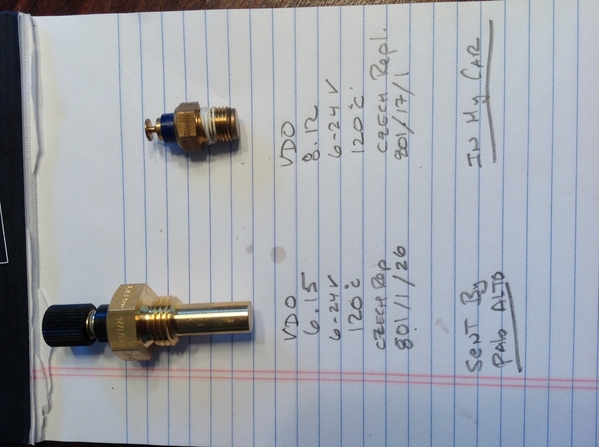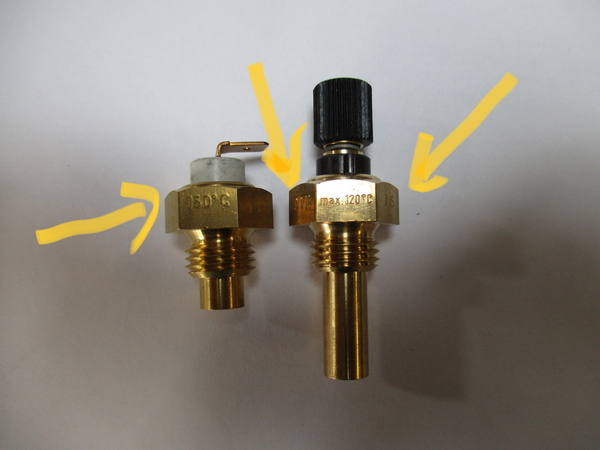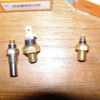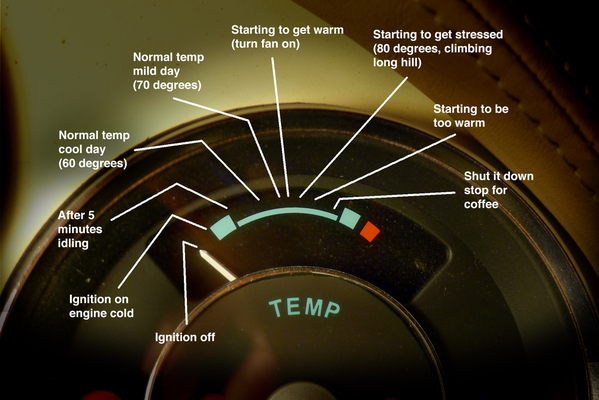Marshall:
So everyone is telling you to buy a dipstick thermometer and then you'll (a.) know exactly what your oil temperature is and (b.) how far off your dash gauge is, but there's a dance you have to do to use it and get that vital info.
We all know that the dash gauge is semi-useless as it is a bar-graph that doesn't tell you much even once it's been calibrated (keep reading).
I have an analog dipstick thermometer just like the one that @Lfepardo shows up above. It works great. Last time I used it was over twelve years ago when I calibrated my dash gauge with it and haven't used it since. I calibrated it for my son to use the car as his wedding get-away car and didn't want him to worry about it overheating. $85 bucks is a lot to spend for a one-shot piece of mind (or calibration of a dash gauge) so, instead, you could go onto Amazon and get one of these for $20 bucks:
https://www.amazon.com/Taylor-...&tag=googhydr-20
Confirm it's accuracy by sticking it into a cup of boiling water to see if it says 212F (or note how far off it is and write it down) and you're good to go.
To calibrate your dash gauge: Do a run around town to warm the car up for 30 minutes, but try to avoid highway driving for now. Once it's warm, pull into a parking lot, keeping the engine running, and open the engine hood. Be careful of the moving fan belt while you pull out the dipstick and put in the candy thermometer (a flashlight helps to see the dipstick hole). Wait 10-15 seconds and see what it says. That should be your lower operating temperature. Note where the needle is on your dash gauge (I just draw a line on the gauge glass with a sharpie felt pen). If you're worried about the fan belt, shut off the engine and quickly do the dipstick/candy therm swap - That'll be almost as good.
Replace the dipstick.
Continue your ride, but spend the next 30 minutes on a highway over 60mph to get it fully warmed up. Pull off the highway into a parking lot, open the hood, pull out the dipstick (be careful of the fan belt or shut it off!) and put in the candy thermometer. After 15 seconds, note the oil temperature. That should be your upper operating temperature. It should be higher than what you measured before. Note that on your dash gauge glass with another line with the sharpie.
What's a "normal" range? Well, for my 2,110 engine, around town driving shows about 200F. I have an external oil cooler so my highway driving temp is 205F. Without the external cooler it would jump up to 215-220F but that higher temp made me nervous, hence the cooler.
So now you have your operating range, but there is a catch; You're dealing with an aircooled engine designed in the 1930's so the temperature will rise a bit on long, fast uphills to be above the upper limit you just noted. That can be as much as two to four more needle-widths (15F), depending on sender, dash gauge compatibility, outside temperature and hill load. Nothing to be worrisome, they all do that, but just note that on hot days on long hills you might see the needle creep up going up hill, and then it'll come back down on the downhill - That's normal.
None of this says that your current sender is OK - I think you should replace it (you've had several suggestions of what to get already) and once you get a sender that puts the needle about mid-scale for around-town driving, you can calibrate it as I've shown and have peace of mind about what's going on back there. The big thing to remember is that you don't want the high end oil temperature to go above 225F but, again, you can't tell what you have until you get that candy thermometer in there to find out.
Hope this helps!



















